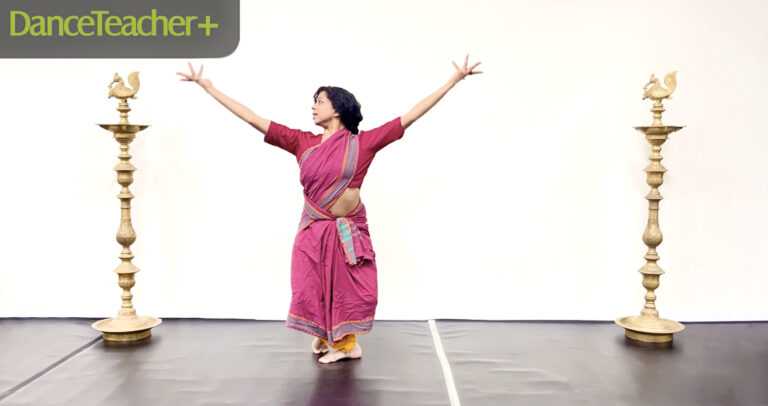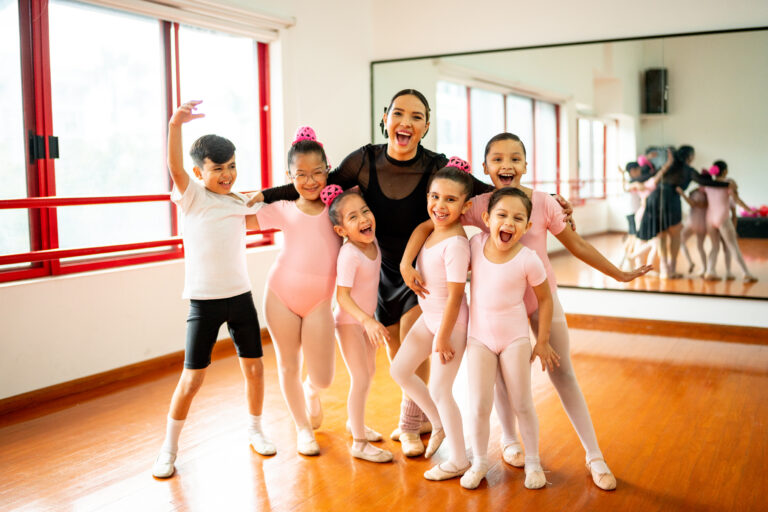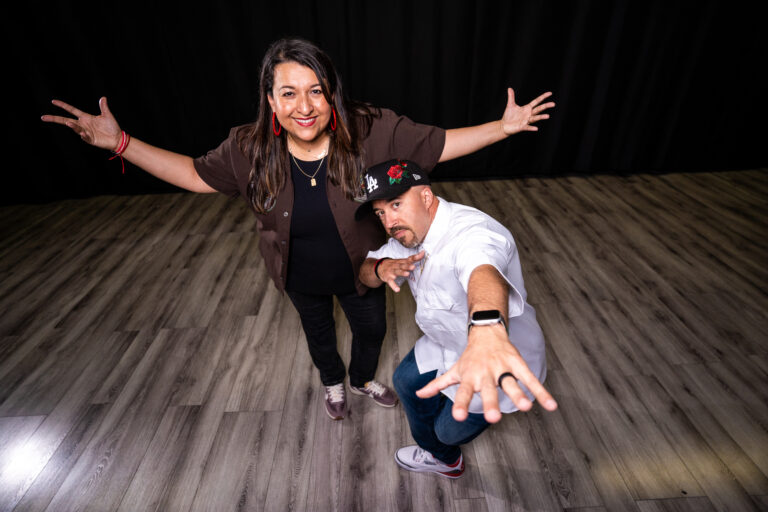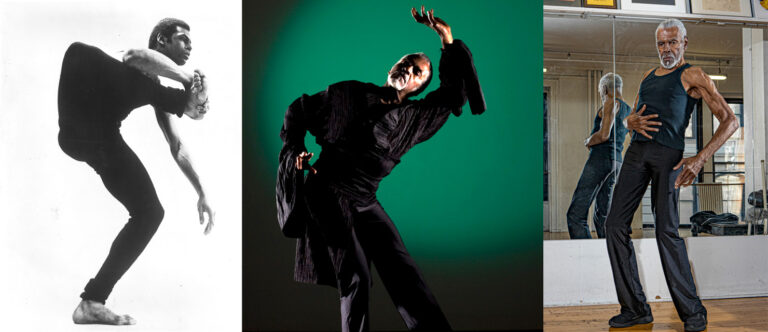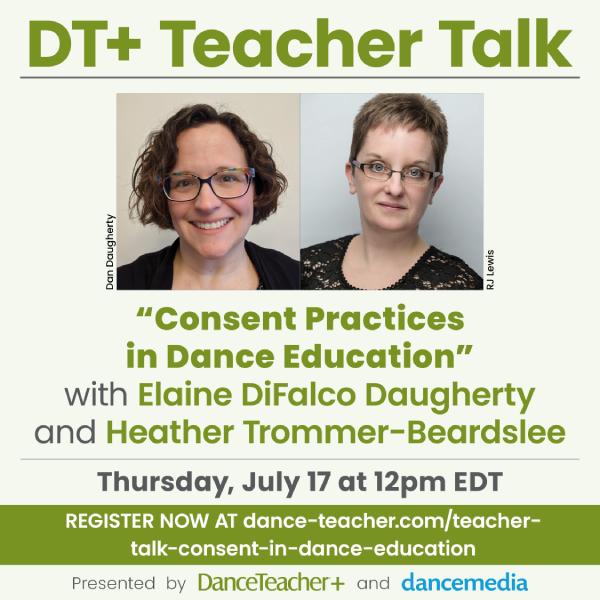
Three teachers set the scene for a successful new school year
Deb Mata and a group of fifth-grade boys at Felida Elementary practicing for a flash mob performance
After three months of silence, school classrooms and hallways will soon be filled with energetic young bodies. For dance teachers, this time of year brings instant momentum and creative potential, but it’s also a vital and delicate time when you must lay a good foundation for the year ahead. Below, three veterans share their tips on getting the best start.
DEB MATA
School: Mata, who has been a K–12 dance educator for 19 years, currently teaches grades 1–8 at Felida Elementary and Thomas Jefferson Middle School in Vancouver, Washington.
One of the primary challenges of a new school year is transforming a classroom of mixed personalities into a community—as Mata says, “creating an ordered classroom where students can then open up and be expressive.”
* Establish and define your environment. To create an environment where students feel like “working artists,” Mata leads her class in a brainstorming session, asking for positive buzzwords the students want to use in their community, such as “trust,” “open-minded,” “support,” “friendship” or “unity.” She then divides the class into small groups of four or five and has them create shapes together based on three of the words. Then the students connect the three shapes with transitions before performing their creations for each other.
* Find outlets for post-summer-break chattiness. Mata uses the students’ need to reunite and socialize to her advantage while reviewing basic concepts about space and time. In one exercise, students stand back to back with a partner. She gives them a verbal prompt, such as “Greet each other in a foreign language,” or “Share one fun activity you did over the summer.” The partners turn to face each other and verbally share. Then, Mata asks partners to work together to create a descriptive shape—such as curvy,
diagonal or crisscross—before leaving their partners and moving through the space alone. She signals when it’s time to partner up with someone new and repeat the exercise.
* Create a strategic seating chart. Mata teaches 800 kids, but every year, on the first day, she greets each student individually before assigning him/her a spot on the floor. She uses this brief interaction to get a feel for the student’s personality. She also takes note of students who might have difficulty following directions or keeping their hands to themselves and puts them up front. “I have them close at hand so I can speak to them one-on-one very quietly at any time,” says Mata.
ANA NERY FRAGOSO
School: With a decade of K–12 experience, Nery Fragoso currently teaches elementary school students at PS 315 in New York City.
Nery Fragoso finds her students are generally relaxed and receptive at the beginning of the year, but she emphasizes that it is vital to set the tone of an orderly classroom right from the start. “You have to make classes fun at the beginning, but they should also be meaty and include everything students are going to need for the rest of the year,” she says. “If you play around with them just because it’s the beginning, you’re going to lose them.” She implements order by having her students begin each class with two minutes of meditation to help them transition into a dance-class mindset.
* Connect with parents. A letter home welcoming parents and students to the program and outlining behavior, preparation and clothing expectations gets parents involved in their childrens’ dance experience right away. “At the very beginning, if a student doesn’t come prepared, I send a letter home to let the parents know that I noticed,” Nery Fragoso says. “I really want to set the tone so that the child and the parent take dance seriously.”
* Establish rules and signals. “We go over the rules and make sure they know that they’re not my rules, but our rules, and that they are there to keep them safe in the studio,” Nery Fragoso says. This includes paying attention to classroom drum signals. Her students learn, for example, to respond to a five-beat rhythm by clapping twice, putting their hands on their heads and listening for instructions. Nery Fragoso teaches these drum signals at the beginning of the year so that they become second nature. “Months later, I can use my drum signal,” she says, “and 28 fourth-graders are quiet in a second.”
* Review your teaching model. Nery Fragoso’s curriculum at PS 315 uses a teaching model based in Laban Movement Analysis, an approach that introduces a progressively complex movement vocabulary. “We do a lot of improvisation in the beginning, reviewing descriptive words, space, levels, relationships, following and mirroring,” she says. “Whatever they study later, that needs to be in place.” If she taught a particular group of students the year prior, she can move forward with new concepts quickly, after just four or five sessions. If it’s her first time with students, she spends an extra couple weeks going over basic vocabulary.
JUDY KIRJAN
School: Kurjan has taught K–12 dance for three years and currently teaches Pre-K through fifth grade at Edgewood Elementary School in Baltimore, Maryland.
At the beginning of the school year, Kurjan, who teaches in a low-income area, finds that her students are enthusiastic and rambunctious. Her primary challenge is using and guiding that energy in the classroom.
* Rein in the energy. Kurjan’s first month of classes is very structured, with a focus on establishing classroom procedures and teaching a warm-up. During this time, she finds energy-consuming games are a lifesaver. “I usually start with great music to get them involved,” Kurjan says. Sometimes she appeases their requests for hip-hop music, but she also tries to introduce new music and has found great success with electronic music and The Beatles.
* Get students excited about dance. Kurjan entices students by calling basic activities “games.” “The kids tend to respond better if I say, ‘This is the skipping game’ or ‘This is the locomotor game’ or ‘This is the axial movements game,’” she says. “They think, ‘Oh, we’re playing now!’ instead of ‘Oh no, I have to do work.’”
* Meet kids at their level. After a few introductory classes, Kurjan’s third-, fourth- and fifth-graders begin an ongoing project that combines drawings, collages, writing and choreography to illustrate their definitions of dance. First, she breaks students into small groups to brainstorm through writings or drawings. Then, each group decides on their brainstorm’s main theme and creates a group dance inspired by that theme. Finally, students respond to the process by making individual collages using photos and words clipped from dance magazines provided by Kurjan. The project allows her to understand her students’ perceptions about dance, which she can use as a springboard for future lessons. DT
Ashley Rivers is a freelance writer and dancer in Boston. She is currently a Calderwood Fellow in writing at Emerson College.
Photo courtesy of Deb Mata
